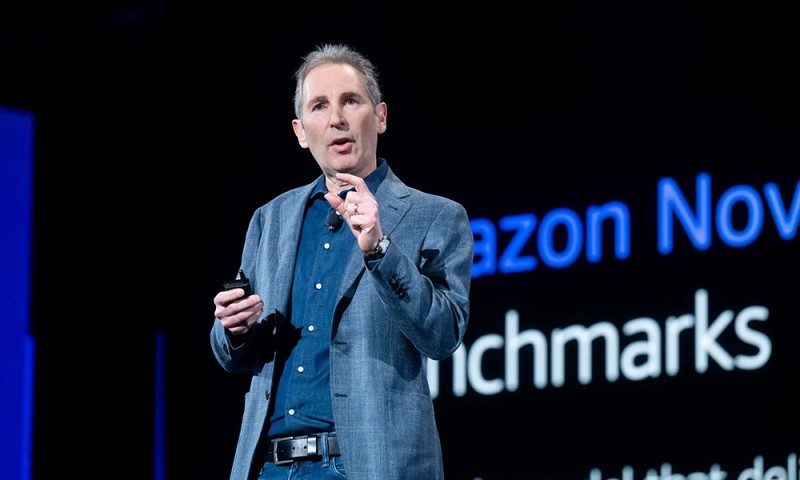
针对裁员1.4万人的决定,亚马逊(Amazon)首席执行官安迪·贾西终于作出回应。他表示,此举并非出于财务考量。
在上周四举行的公司季度财报电话会议上,贾西指出,本轮裁员的原因在于“文化错配问题”,而非其他因素。
他表示:“我们几天前宣布的裁员,既非出于财务考量,至少目前也与AI没有直接关系,而是源于文化问题。”
上周的裁员主要涉及中层管理岗位。早在6月,贾西曾在内部备忘录中提到,得益于AI带来的“效率提升”,亚马逊未来将需要更少的员工。而在上周宣布裁员的另一份备忘录中,公司人力资源高级副总裁则表示,此举是为了更好地适应“技术变革”。
贾西还提到,亚马逊近年来业务规模持续扩张。公司目前共有约155万名员工,其中企业职能岗位约35万人。而根据提交到美国证券交易委员会(Securities and Exchange Commission)的文件,截至2019年12月(疫情前),亚马逊的员工总数仅为79.8万人。
贾西表示:“如果像我们这样连续几年保持高速增长,业务规模、员工数量、办公地点、业务类型不断扩张,最终就会导致人员数量大幅增多,组织层级更加复杂。”
贾西还认为,这种快速扩张也可能带来隐忧。
他表示:“有时在不知不觉间,你可能会削弱一线员工的主人翁意识,而他们正是实际工作的承担者,也是大多数‘双向门决策’的执行者,而这些决策理应在一线准确快速完成。”
亚马逊发言人对此不予置评。
过去几个月,赛富时(Salesforce)、塔吉特(Target)和派拉蒙(Paramount)等公司也相继裁员数千人。美联储(Fed)主席杰罗姆·鲍威尔上周表示,近期多家大公司将AI作为暂停招聘或裁员的原因,美联储“正在密切关注这一现象”。
不过,高盛(Goldman Sachs)对投行人士的一项调查显示,仅有11%的企业客户因AI而主动裁员;相比之下,在科技、媒体与通信行业中,约三分之一的公司正在因AI缩减员工规模。
在此次财报电话会上,贾西也表达了类似观点。他认为,当前的“技术变革”要求企业必须保持灵活性和应变能力。
他表示:“保持组织精简、结构扁平和高效运转至关重要,这正是我们行动的方向。”(*)
译者:刘进龙
审校:汪皓
针对裁员1.4万人的决定,亚马逊(Amazon)首席执行官安迪·贾西终于作出回应。他表示,此举并非出于财务考量。
在上周四举行的公司季度财报电话会议上,贾西指出,本轮裁员的原因在于“文化错配问题”,而非其他因素。
他表示:“我们几天前宣布的裁员,既非出于财务考量,至少目前也与AI没有直接关系,而是源于文化问题。”
上周的裁员主要涉及中层管理岗位。早在6月,贾西曾在内部备忘录中提到,得益于AI带来的“效率提升”,亚马逊未来将需要更少的员工。而在上周宣布裁员的另一份备忘录中,公司人力资源高级副总裁则表示,此举是为了更好地适应“技术变革”。
贾西还提到,亚马逊近年来业务规模持续扩张。公司目前共有约155万名员工,其中企业职能岗位约35万人。而根据提交到美国证券交易委员会(Securities and Exchange Commission)的文件,截至2019年12月(疫情前),亚马逊的员工总数仅为79.8万人。
贾西表示:“如果像我们这样连续几年保持高速增长,业务规模、员工数量、办公地点、业务类型不断扩张,最终就会导致人员数量大幅增多,组织层级更加复杂。”
贾西还认为,这种快速扩张也可能带来隐忧。
他表示:“有时在不知不觉间,你可能会削弱一线员工的主人翁意识,而他们正是实际工作的承担者,也是大多数‘双向门决策’的执行者,而这些决策理应在一线准确快速完成。”
亚马逊发言人对此不予置评。
过去几个月,赛富时(Salesforce)、塔吉特(Target)和派拉蒙(Paramount)等公司也相继裁员数千人。美联储(Fed)主席杰罗姆·鲍威尔上周表示,近期多家大公司将AI作为暂停招聘或裁员的原因,美联储“正在密切关注这一现象”。
不过,高盛(Goldman Sachs)对投行人士的一项调查显示,仅有11%的企业客户因AI而主动裁员;相比之下,在科技、媒体与通信行业中,约三分之一的公司正在因AI缩减员工规模。
在此次财报电话会上,贾西也表达了类似观点。他认为,当前的“技术变革”要求企业必须保持灵活性和应变能力。
他表示:“保持组织精简、结构扁平和高效运转至关重要,这正是我们行动的方向。”(*)
译者:刘进龙
审校:汪皓
Amazon’s CEO has finally spoken up about the company’s 14,000 layoffs earlier this week, and he claims the motive was not at all financial.
Speaking during the company’s quarterly earnings call Thursday, CEO Andy Jassy said laying off those employees was about a mismatched cultural fit—and nothing else.
“The announcement that we made a few days ago was not really financially driven, and it’s not even really AI-driven, not right now at least,” he said about the job cuts. “It’s culture.”
The job cuts this week, which mostly affected middle managers, follow a June memo in which Jassy said Amazon will need fewer employees thanks to the “efficiency gains” brought on by AI. In a separate memo announcing this week’s layoffs, Amazon’s senior vice president of people said the layoffs were about adapting to “transformative technology.”
Jassy also mentioned Amazon’s business has grown over the past years. The company has about 1.55 million total employees, with 350,000 corporate employees alone. As of December 2019, prior to the pandemic, the company had 798,000 total employees, according to a filing with the Securities and Exchange Commission.
“If you grow as fast as we did for several years, the size of businesses, the number of people, the number of locations, the types of businesses you’re in, you end up with a lot more people than what you had before, and you end up with a lot more layers,” he said.
This type of growth can lead to consequences, Jassy added.
“Sometimes without realizing it, you can weaken the ownership of the people that you have who are doing the actual work and who own most of the two-way door decisions, the ones that should be made quickly and right at the front line,” he said.
A spokesperson for Amazon declined to comment.
Amazon joins other companies such as Salesforce, Target, and Paramount who have together laid off thousands of workers in the past few months. Several large companies have cited AI as a reason for hiring pauses or layoffs recently, said Fed Chairman Jerome Powell this week, adding that the Fed is “watching that very carefully.”
To be sure, a study of Goldman Sachs investment bankers this week found only 11% of their corporate clients were actively laying people off due to AI. In contrast, about a third of companies in the technology, media, and telecommunications category are reducing headcount because of AI.
During the quarterly earnings call, Jassy seemed to echo the sentiment, saying the “technological transformation” currently underway means companies need to be nimble and adaptable.
“It’s important to be lean, it’s important to be flat, and it’s important to move fast,” he said. “That’s what we’re going to do.”

